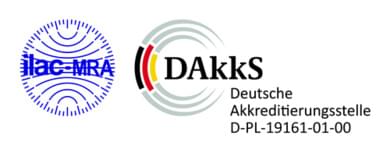New Hazardous Substances Ordinance: What will change in 2023?
As announced in our follow-up report to DCONex, the new Ordinance on Hazardous Substances (GefStoffV) is scheduled to appear in Q2 2023. But who does this regulation actually affect? And what are the most important changes in the new GefStoffV? Are there any innovations to the regulations for dealing with asbestos? Get an overview here:
To whom does the Hazardous Substances Ordinance apply?
The Hazardous Substances Ordinance applies to all persons and companies that manufacture, import, use, formulate mixtures, place chemicals on the market, store them, or make them available as suppliers to other companies.
The Hazardous Substances Ordinance (GefStoffV) is the highest-ranking regulation in Germany governing the handling of hazardous substances and is intended to contribute to occupational safety. Other regulations are subordinate to the GefStoffV. In case of conflict, therefore, the Hazardous Substances Ordinance must always be followed.
What will change with the new Hazardous Substances Ordinance?
The new GefStoffV is intended to improve the prevention of work-related cancers. The following changes are intended to help implement this goal:
- Risk-based measures concept: When handling carcinogenic hazardous substances of category 1A or 1B, a risk-based measures concept is to be fully implemented. The protective measures required for an activity, therefore, depend on the statistical risk of contracting cancer as a result of that activity.
- Activities involving asbestos: The new Hazardous Substances Ordinance implements the results of the national asbestos dialog. The Cancer Directive (Directive 2004/37/EC) and the Asbestos Directive (Directive 2009/148/EC) provide European legal requirements that have been incorporated into the new version of the Hazardous Substances Ordinance.
- Resolving legal/enforcement issues: The ordinance has been improved in terms of language and structure, and previous legal and enforcement problems have been resolved. For example, the regulations on risk assessment have been expanded to include psychological stresses that can arise when handling hazardous substances.
What is the exposure-risk concept?
With the help of the exposure-risk concept, the new Hazardous Substances Ordinance for the first time objectively describes the statistical probability of a person contracting occupational asbestos-related diseases. Previously, if a substance was classified as a category 1A or 1B carcinogen, only undifferentiated measures could be taken.
The exposure-risk concept considers the values of acceptance concentration (10,000 fibers/m³) and tolerance concentration (100,000 fibers/m³). If the exposure falls below the acceptance concentration, a low risk (4:10,000, i.e. four cases per 10,000 employees) of developing cancer in the course of a lifetime can be assumed. If the tolerance concentration is exceeded, a high risk (4:1,000) of developing cancer applies. A medium risk applies to fiber volumes between 10,000 fibers/m³ and 100,000 fibers/m³.
The new concept thus allows protective measures to be linked to the level of the identified risk when working with carcinogenic substances in categories 1A and 1B.
What will change with the new GefStoffV with regard to asbestos?

- Information and notification obligations: Anyone who commissions work on buildings or technical systems that may contain hazardous substances (such as asbestos) must inform the company carrying out the work that there are particular health hazards associated with the work. These obligations exist even if the presence of hazardous substances has not yet been proven.
- Newly formulated protective measures: In Annex I, No. 3, there will in the future be special regulations for handling certain hazardous substances such as asbestos, for example for companies that are active in the field of technical/expert knowledge.
- The severity of asbestos exposure: Instead of differentiating between solidly and loosely bound asbestos, the following classifications will apply from now on: low, medium, and high exposure. Private individuals are only allowed to carry out activities with a low risk of asbestos exposure; only trained specialist companies are allowed to carry out activities with high exposure.
- Prohibited and permitted activities: the new § 11 GefStoffV contains regulations that were previously laid down in TRGS 519 and LV 45, among others. For example, asbestos cement that has not been completely coated may not be cleaned or coated. It is prohibited to build over parts containing asbestos if they were individually fixed during previous installation (e.g. Floor-Flex panels).
- Exceptions to the ban on covering over asbestos: In general, building materials containing asbestos may not be covered over. Now, exceptions are precisely defined. It is permitted, for example, to wallpaper or paint plaster containing asbestos.
- Exploration requirement: All buildings constructed before the Germany-wide ban on asbestos (October 31, 1993) are presumed (rebuttable) to contain asbestos-containing materials. The following also applies to private households: Anyone wishing to carry out renovation or refurbishment work in buildings must obtain the relevant information before starting the work.
- Employer duties and requirements: Renovation and construction companies that handle building materials containing asbestos should take a close look at the new paragraphs § 10 and § 10a GefStoffV. Among other things, they deal with mandatory asbestos measurements at the workplace, protective clothing, proof of professional competence in accordance with TRGS, and correct labeling of work areas with asbestos exposure risk.
We hope you were able to get a good overview of changes to the Hazardous Substances Ordinance. We look forward to the publication of the new regulations in the near future and hope that they will contribute to the better protection of workers and private persons against health hazards caused by asbestos. In particular, the information and reporting requirements for companies as well as private homeowners, but also the risk determination based on fiber concentrations, make reliable forensic asbestos analyses more important than ever. With a bit of luck, an asbestos analysis will show that no special protective measures are necessary - if the test result proves that no asbestos is present.


